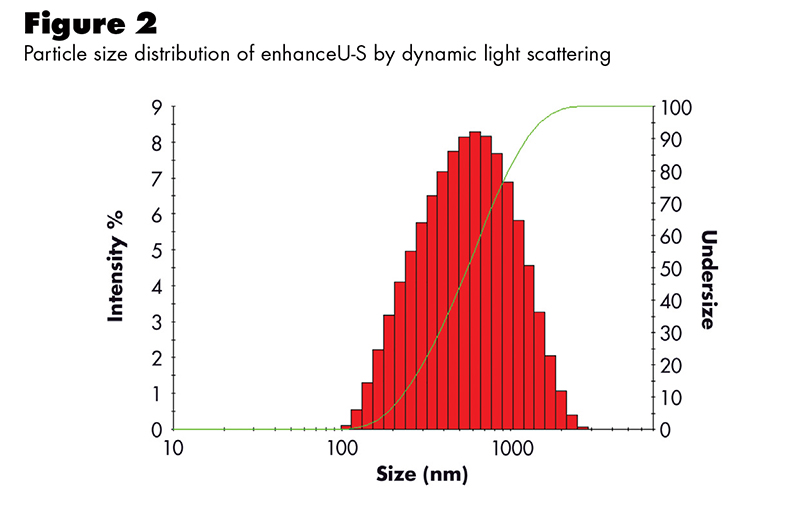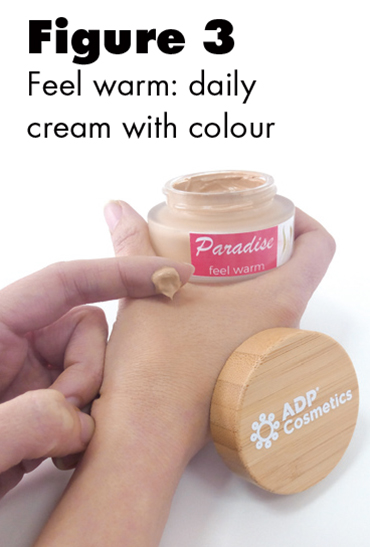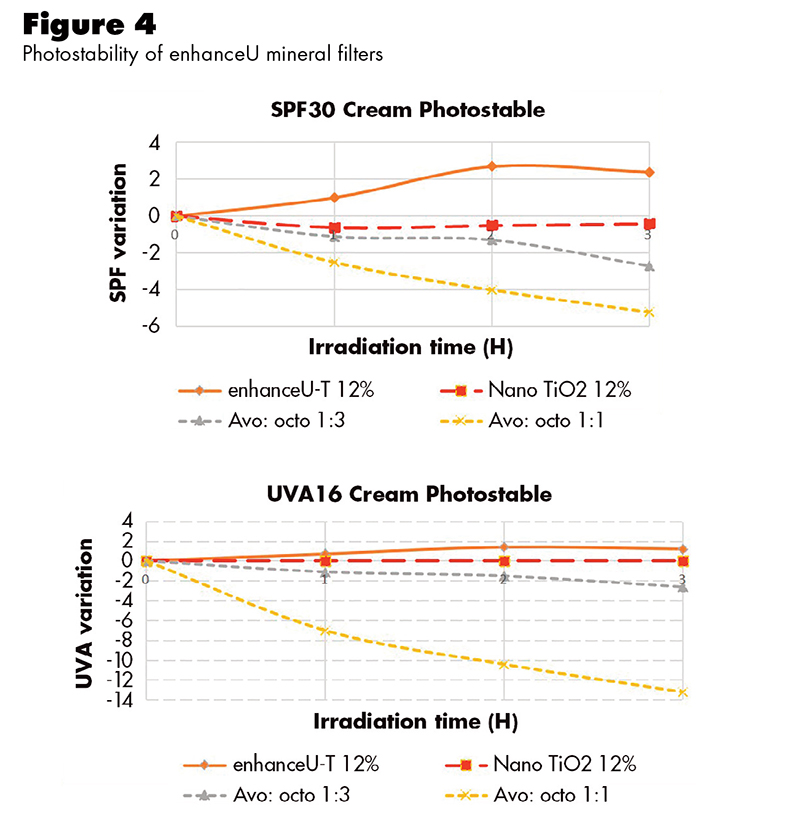Whatever the season, daily care should incorporate a sunscreen. It allows us to mitigate the adverse effects of the sun, an accelerator of skin ageing.
Delaying the ageing of the skin – the appearance of wrinkles and spots – is one of consumers’ main objectives when selecting a cosmetic product.
In addition, their commitment to sustainability and cosmetics with natural claims is growing due to the association of the natural concept with milder and healthier skin products that are environmentally innocuous.
From a technical point of view, we should take into account the entire lifecycles of cosmetic products, which include their design, manufacture, use and ultimate disposal.
Cosmetics manufacturers may find in the Twelve Principles of Green Chemistry[1] a recognised guide to reducing the environmental impact and the potential negative health effects of producing chemicals and cosmetics.
To introduce a sustainable product to the market, we should start with the first protagonists of the lifecycle of a cosmetic: ingredients manufactures and skin care formulators.
In their hands is the choice of ingredients that possess little or no toxicity to human health and the environment, and which are efficient in their function.
They are – we are – responsible for the selection of ingredients and cosmetics with energy efficient fabrication procedures that also minimise the need for raw materials and the use of auxiliary substances (eg solvents).
In this context, ADPCosmetics has developed natural formulas to take care of the skin and protect it from UV radiation. These formulas contain multifunctional ingredients, which allow the maker to minimise the number of necessary ingredients in the manufacture of the cosmetic.
By choosing formulas with a lower number of ingredients, we contribute to reducing the set of manufacturing processes and associated waste.
Natural formula for skin care & sun care: Feel young with enhanceU-S
The first natural formula developed by ADPCosmetics is Feel young, a water-in-oil (w/o) emulsion with ingredients for UV protection, hydratation and reparation of the skin (figure 1).

SPF30 Feel young has the INCI: Aqua, zinc oxide, isoamyl cocoate, sorbitan olivate, jojoba esters (and) Helianthus annuus (sunflower) seed wax (and) Acacia decurrens flower wax (and) polyglycerin-3, lauryl olivate, titanium dioxide, silica, glycerin, Cocos nucifera (coconut) oil, Aloe barbadensis leaf extract, pentylene glycol (and) phenylpropanol, sodium chloride, parfum, ccellulose gum, Chondrus crispus powder (carrageenan), Ceratonia siliqua gum, sucrose.
It has a pH of 7.
Protection from both UVB and UVA radiation is achieved with one only ingredient: enhanceU-S, a non-nanometric mineral UV filter with the INCI: Zinc oxide, titanium dioxide, silica.
Figure 2 includes DLS analysis, one of the techniques used to check the particles’ size.
The natural formula Feel young shows SPF30 with 12wt% enhanceU-S concentration and SPF50 with 15wt% enhanceU-S concentration. Protection from UVA radiation is shown by UVA/UVB > 0.6, which doubles the minimum value of UVA protection required, UVA/UVB > 0.3m and critical wavelength > 370 nm (in vitro measurements).

The properties of this formula (appearance, colour, fragrance, pH, SPF and UVA/UVB ratio) remain unchanged after three months’ stability testing (internal protocol, at different temperature and light conditions).
The evaluation of the protective properties of the cream after three months (mean values) is included in table 1 to highlight the importance of checking that these parameters are maintained over time within the desired range.
Natural formula for skin care & sun care with colour: Feel warm with enhanceU-T-warm
The second natural formula is Feel warm, an o/w emulsion with ingredients for UV protection in skin care and colour cosmetics (figure 3).

SPF50 Feel warm has the INCI: Aqua, titanium dioxide, caprylic/capric triglyceride, polyglyceryl-6 distearate, CI-4492, glycerin, Butyrospermum parkii butter, ethylhexyl palmitate, pentylene glycol, Silybum marianum extract, ethylhexyl stearate, jojoba esters (and) polyglyceryl-3 beeswax, hydrolysed jojoba esters, perfume (fragrance), sodium chloride, silica, CI-77491, phenylpropanol, hydrogenated olive oil unsaponifiables, cetyl alcohol, citric acid, CI-77499, xantham gum. It has a pH of 6.5.
Colour and protection from both UVB and UVA radiation is achieved with one only ingredient, enhanceU-T-warm: a non-nanometric mineral UV filter with the INCI: Titanium dioxide, CI-77492, silica, CI-77491, CI-77499.
The natural formula Feel warm shows SPF30 with 12wt% enhanceU-T-warm concentration and SPF50 with 15wt% enhanceU-T-warm concentration. Protection from UVA radiation is shown by UVA/UVB > 0.6, which doubles the minimum value of UVA protection required, UVA/UVB > 0.3m and critical wavelength > 370nm (in vitro measurements).

Measuring equipment: Spectrometer SPF-290AS Solar Light
The properties of this formula (appearance, colour, fragrance, pH, SPF and UVA/UVB ratio) remain unchanged after three months’ stability testing (internal protocol, at different temperature and light conditions). Like the previous formula, the results of SPF and UVA protection are maintained over time (table 1).
Protection from UVB & UVA radiation
Moderate exposure to UV light has beneficial health effects, such as UVB’s promotion of vitamin D synthesis, or its contribution to feelings of wellbeing.
However, UV is associated with cellular damage and carcinogenic effects, as well as less harmful erythema (from UVB, 𝝀 290-320nm, which is more energetic and seasonal) and skin photoageing (from UVA, 𝝀 320-400nm, which is more penetrating due to its greater wavelength and is constant all year round).
To protect skin from excessive UV radiation, the classical solution has been the development of sunscreens with chemical or mineral filters, or combinations.
Chemical filters contain aromatic groups and carbonyl groups that absorb UV radiation (mainly UVB) and disperse it through conformational changes in the molecules, emitting radiation with larger wavelengths and energy in the form of heat.
Physical filters, meanwhile, are titanium dioxide TiO2 and zinc oxide ZnO, which form a physical barrier on the skin and act through the dispersion, reflection and absorption of UV radiation. The most commonly used are TiO2 nanoparticles for UVB protection and ZnO for UVA protection.
In this context, ADPCosmetics proposes the use of latest generation non-nanometric mineral UV filters as an alternative to chemical or traditional mineral filters. EnhanceU filters (table 2) protect from both UVB and UVA radiation.

The features of enhanceU filters make them suitable to meet the following major challenges in formulations:
1. High SPF & broad spectrum protection:
With the minimum filter concentration ca. 12-15wt%, formulas can reach SPF30-50+ with a ratio of UVA/UVB > 0.6. As a reference, regulations state that a concentration of no more than 25wt% of mineral filters in a formula can be used (this is more restrictive for chemical filters) and UVA/UVB > 0.3 should be obtained.
2. Photostability:
The covering of silica ensures the photostability of enhanceU mineral filters. When irradiating samples that contain different mineral filters (INCI: Titanium dioxide, silica) or chemical filters (avobenzone stabilised with octocrylene), the graphs (figure 4) show that the mineral filters maintain the SPF and UVA values while the organic filters do not.

The analysis was carried out with a simulator Solar Oriel LCS-100TM Small Area Sol1A (solar simulator) with a Xenon 100W CW lamp generating 1 Sol of irradiation with an AM1.5G filter (intensity of 166 mW/cm2).
A specific filter for UVA/UVB radiation was used. The SPF measurements were obtained at time 0 and after 1, 2 and 3 hours of irradiation with a spectrophotometer fitted with a Xenon CW lamp of 125W operating at 75W (SPF-290 Analyser System).
3. Stability:
EnhanceU filters have a characteristic structure in which the particles are anchored and dispersed. This structure leads to an improvement of the SPF and reduces the agglomeration that can happen with mineral filters (especially the more reactive nanoparticles) and which affects the ageing of sun creams.
4. Sensoriality:
Several characteristics explain the sensory improvement over other mineral filters. Firstly, the ease of dispersion in the aqueous phase presented by enhanceU filters.
Secondly, the volume in the formula, which is much lower than nanoparticles’ for the same SPF result (as it reduces the mineral load). To develop formulas with colour, enhanceU-T avoids the need for extra pigments because iron oxides are already present.
Besides, the enhanceU-S filter, thanks to its lower refractive index, is recommended for transparent formulas, and is easily incorporated both in the aqueous and oily phase.
5. Manipulation & safety:
The non-nanometric size facilitates handling in formulations. EnhanceU filters are supplied in powder form, and suitable PPE for particles (non-nanometric) must be used.
6. Regulations:
TiO2 or ZnO mineral filters can incorporate up to 25wt% in formula, except in applications that can lead to the exposure of the end user’s lungs due to inhalation if it contains ZnO. These are the regulations that apply to enhanceU-T and enhanceU-S respectively.
7. Natural formulas:
EnhanceU filters are Ecocert and COSMOS certified, and according to Natural ISO 16128: 0% Natural content – 100% Natural origin content (based on the definition of natural mineral ingredients and derived mineral ingredients, Natural Origin Index = 1 TiO2, Natural Origin Index = 1 SiO2, Natural Origin Index = 1, CI-7791, CI-7792, CI-7799).
Additionally, enhanceU filters are fabricated according to ISO 9001:2015 and ISO 22716:2008, and are FDA registered.
In summary, ADPCosmetics proposes two natural formulas (o/w and w/o emulsions) with non-nanometric UV filters. Sun care and skin care products can be formulated with enhanceU-S while enhanceU-T gives different shades to cosmetic formulas.
EnhanceU filters are manufactured with a patented technology that meets sustainability principles and allows the creation of ingredients for high SPF and broad spectrum protection.
References
1. Anastas PT, Warner JC. 1998. Green Chemistry: Theory and Practice. New York: Oxford University Press.
